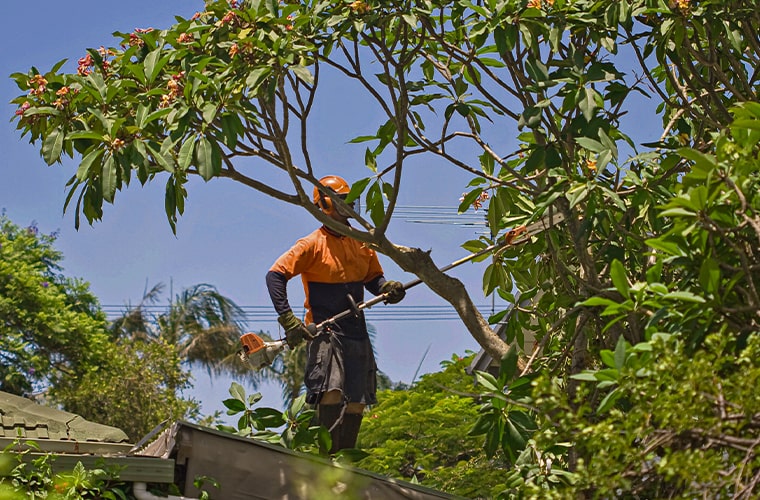When it comes to tree removal, numerous elements come into play that might drastically affect the cost. It’s not a one-size-fits-all service, and understanding what factors influence pricing will help you budget accordingly. In this comprehensive guide, we will investigate the numerous elements that contribute to the cost of tree removal, allowing you to make informed decisions when it’s time to say goodbye to that old, problematic tree in your yard.
The abundance of trees on our properties provides natural beauty, shade, and quiet. However, there are times when removing a tree is necessary. Understanding the economic ramifications of tree removal is crucial for both homeowners and property managers, whether it’s due to safety concerns, illness, or landscaping preferences.
The cost of tree removal can vary substantially depending on numerous essential factors, and understanding these features will help you plan and budget for the removal procedure.
Factors Influencing the Cost of Tree Removal
Tree Size and Variety
The size and type of tree are important considerations in deciding the cost of removal. Larger trees typically necessitate more time, equipment, and skill to be properly removed. A little tree 20 feet tall, for example, will be significantly less expensive to remove than an 80-foot-tall oak tree.
Cost Breakdown:
- For smaller trees, approximately 30 feet or shorter, such as fruit trees, hawthorns, or silver birches, you can generally expect to pay an estimated range of $300 to $500 for removal services.
- Medium-sized trees ranging from 30 to 60 feet, including varieties like maples and elms, typically fall within the price range of $600 to $1,000 for removal.
- For larger trees, around 60 to 80 feet in height, such as mature oaks and evergreens, the cost can substantially increase, within the range of $1,500 to $3,000.
The Condition of the Tree
The overall health and condition of the tree also has an impact on the cost. A dead or sick tree may be more difficult to remove and may necessitate additional safeguards, raising the cost. Healthy trees are typically less difficult and less expensive to remove.
Tree location
The position of the tree has a considerable impact on cost. To avoid damage, trees near buildings, electrical wires, or other structures must be removed with greater care and precision. The proximity of these impediments can raise the cost.
Availability
Is the tree easily accessible, or is it hidden in a remote corner of your property? Difficult access may necessitate additional labor and equipment, raising the cost.
Removal in an Emergency
If a tree poses an urgent threat, such as being on the edge of toppling, emergency removal may be required. Because of the urgency and potential risks involved, emergency services are often more expensive. Emergency tree removal costs $5,000.
Stump Removal
The removal of the tree is one step in the process; the removal of the stump is another. Stump removal is an additional service with its own cost that varies depending on the size of the stump. It costs 60$-350$
Local Rules and Regulations
Local restrictions and the requirement for permissions might also have an impact on the cost. Permits may be required in some locations for tree removal, which can add to the overall cost.
Cleaning and debris removal
Following the removal of the tree, there is the question of cleaning up the debris. Some tree removal companies include cleanup in their prices, while others do not. Make sure you discuss this with the service provider; normally, it cost100$-600$
Seasonal Variables
The cost can vary depending on the time of year. Tree removal is frequently more expensive during peak seasons due to increased demand. Planning your removal during the off-season can help you save money.
Professional Experience
Hiring a reliable and skilled tree removal service is critical. While their experience may come at a premium cost, it ensures the project is done safely and efficiently.
Professional vs. Do-It-Yourself Tree Removal
While some homeowners choose to do their own tree removal to save money, it is critical to understand the risks involved. Professional tree removal services include knowledge, insurance, and the necessary equipment, resulting in a safer and more effective removal operation.
How to Reduce the Cost of Tree Removal
First, consider executing the operation during the tree service’s off-season, when charges are often lower due to lower demand. Another option is to undertake the cleanup and debris removal yourself, if possible, to save on additional service charges.
Obtaining many quotations from different tree removal companies can also help you locate more competitive prices. Keep in mind that regular tree maintenance, such as pruning and trimming, can reduce the need for costly removals in the future, emphasizing the necessity of proactive tree care to save money in the long term.
FAQs
1. What is the average cost range for tree removal services?
The cost of tree removal can vary widely, but on average, it can range from $150 to $3,000 or more, depending on various factors like tree size, type, location, and condition.
2. Can I get a more accurate estimate for my specific tree removal project?
Yes, it’s advisable to request quotes from several tree removal service providers. They can assess your tree and provide a personalized estimate based on its unique characteristics and your specific requirements.
3. Are there any additional costs I should be aware of besides the basic tree removal fee?
Yes, additional costs may include stump removal, cleanup, and debris removal. It’s essential to discuss these potential extras with your chosen tree removal service to avoid unexpected expenses.
4. Can I save money by removing a smaller tree myself?
Removing a small tree on your own might be feasible, but it’s essential to consider safety and potential risks. For larger trees, it’s strongly recommended to hire professional tree removal services.
5. Are there any factors that can make tree removal more expensive?
Yes, factors like the tree’s size, location near structures or power lines, emergency removal needs, and the tree’s overall health can all contribute to higher tree removal costs.
Conclusion
Understanding the economic aspects involved in tree removal is critical for making informed decisions about your property’s trees. The size and condition of the tree, as well as its location and accessibility, all have an impact on the final pricing. Seeking quotations from trustworthy tree removal services and taking into account aspects such as seasonal timing and DIY cleanup will help you save money while guaranteeing the safe and efficient removal of trees when necessary.




